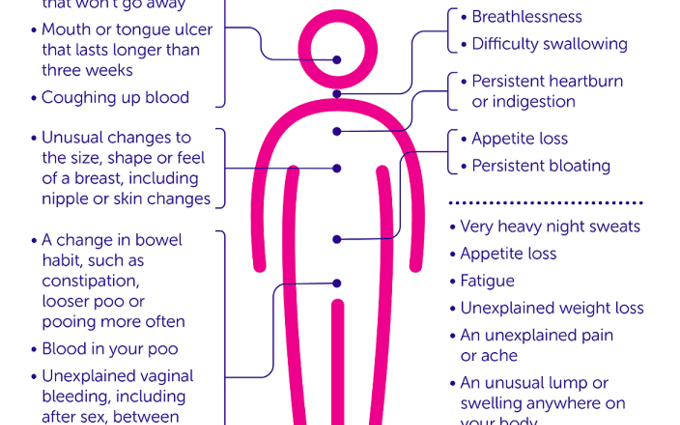Neuroendocrine tumors are a heterogeneous group of tumors that originate in neuroendocrine cells, i.e. cells that can produce hormones and other biologically active compounds. As much as 70 percent. of them develops within the digestive system – in the stomach, pancreas and intestines. There are many of them and they give a variety of symptoms. They are often mistaken for an infection. They are rarely diagnosed on time, and timing is crucial in this case. We present the most common ailments that cannot be underestimated.
Hypoglycemia after exercise or prolonged starvation
This symptom could be an insulinoma (an insulin tumor), especially if it is accompanied by weakness, muscle tremors and loss of consciousness. Often the symptoms of the disease can resemble intoxication or a seizure. The feeling of hunger accompanying hypoglycemia prompts patients to eat frequent meals, which causes obesity. The so-called Whipple’s triad: Symptoms occur at the time of fasting, are accompanied by hypoglycaemia, and resolve with carbohydrate intake. The disease is rarely malignant.
Excessive acidity, a recurrent stomach or duodenal ulcer in an unusual location (Zollinger-Ellison syndrome)
Such ailments should lead to the suspicion of a gastrinoma (gastrin tumor), especially if they are accompanied by diarrhea, often fatty, and peptic ulcer disease is difficult to treat. Often coexisting with severe esophagitis, a pituitary tumor, or hyperparathyroidism. 2/3 of the tumors are malignant with different development dynamics (sometimes many years).
Necrolytic skin erythema creeping in the mouth and genital area
This could be a glucagonoma (glucagon tumor). Symptoms such as weight loss, stomatitis, diarrhea and anemia, and mild diabetes mellitus are also common. The atypical symptoms include: venous thrombosis, pulmonary embolism, hypoalbuminemia, deficiency of amino acids, as well as psychosis and depression. Glucagonoma accounts for a small percentage of pancreatic cancers.
Persistent periodic or constant watery diarrhea
These could be symptoms of a VIP (VIP-secreting tumor), which is 50 percent cases is malignant. Characteristically, the diarrhea is profuse and does not go away with starvation. Additionally, there is hypochlorhydria (lack of hydrochloric acid in gastric juice), hypokalemia with arrhythmias and asthenia (state of physical and mental weakness). Less frequent symptoms include erythema and impaired glucose tolerance.
Fat stools, gallbladder stones, abdominal pain, diabetes mellitus, fatty diarrhea, gallbladder dysfunction, weight loss
These could be symptoms of a somatostatinoma (somatostatin tumor). Typical symptoms are “inhibition syndrome” (decreased exocrine and endocrine function of the gastrointestinal tract) such as impaired glucose tolerance, gallbladder stones, diarrhea, fatty stools and achlorhydria. Unusual symptoms include abdominal pain, weight loss and anemia (with spreading the tumor), and sometimes symptoms of obstruction and gastrointestinal bleeding.
Abdominal pain, enlarged liver, intestinal obstruction
This may be a sign of hormonally inactive pancreatic islets. While usually asymptomatic, jaundice and weight loss may also occur.
Seizures of redness of the face and neck, with tachycardia and dizziness
This could be a carcinoid tumor. The disease is often accompanied by edema, excessive sweating and telangiectasia (vascular spider veins). Common symptoms also include diarrhea, abdominal pain, hot flushes and skin lesions. Bronchospasms caused by food, alcohol and even defecation can also occur. Therefore, carcinoid tumors are often misdiagnosed as irritable bowel syndrome, symptoms related to menopause, and even neurosis.
Remember! Neuroendocrine tumors are rare tumors that do not show symptoms for a long time. They often mimic other diseases as well. Therefore, it usually takes 3 to 7 years to make a diagnosis.










